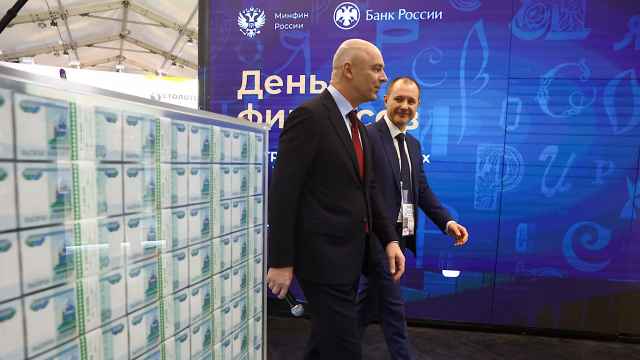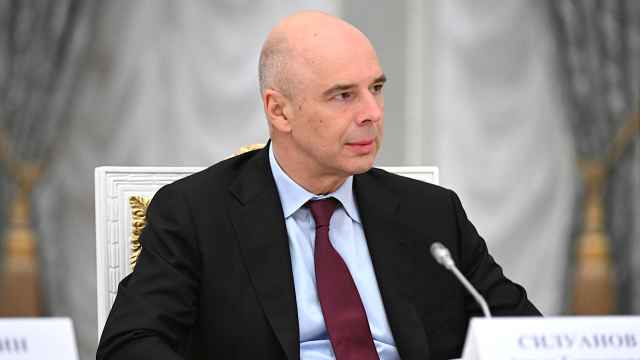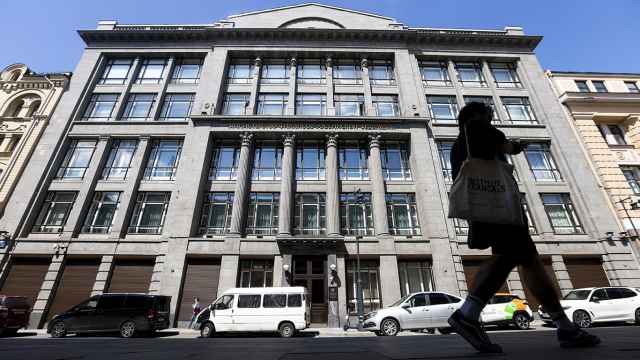Russia’s Finance Ministry is aggressively increasing its borrowing in a bid to cover growing fiscal gaps and hedge against an increasingly uncertain economic future as military spending surges and oil and gas revenues slump.
Six months into 2025, the ministry has already borrowed more than 2.7 trillion rubles (approximately $35 billion), or 56% of its annual borrowing plan.
This week alone, it raised 195 billion rubles (around $2.5 billion) through two new issues of government bonds, known as OFZs, hitting its second-quarter fundraising target of 1.3 trillion rubles (about $16.9 billion).
Russia is paying steep yields — 15.2% on six-year bonds and 15.5% on 11-year debt — amid high interest rates aimed at taming inflation.
The Finance Ministry has prioritized fixed-rate bonds to avoid future increases in debt servicing costs, even though they lock in high rates regardless of changes in monetary policy.
When demand is low, the ministry resorts to issuing floaters, or bonds with variable interest rates tied to the key rate, but it has grown wary of their growing share in the debt portfolio.
The Finance Ministry prefers to limit the use of floating-rate debt unless absolutely necessary, Deputy Finance Minister Vladimir Kolychev has said.
Conditions have recently turned more favorable for borrowing. The Feb. 12 phone call between Presidents Vladimir Putin and Donald Trump stirred fleeting hopes of peace in Ukraine, drawing risk-seeking investors back into the Russian bond market.
That momentum continued into March, as expectations of declining inflation and potential interest rate cuts spurred additional demand.
For now, the ministry is capitalizing on the window of opportunity.
By front-loading its borrowing now, the Finance Ministry is building a fiscal buffer in case markets turn against it later this year, analysts at Gazprombank said.
Still, risks are mounting. In May, the government approved an additional 826 billion rubles (around $10.7 billion) in spending, funded by expected windfalls in non-oil and gas revenues. But economic growth is slowing and inflation is cooling faster than anticipated, raising concerns that those revenues may not materialize.
The 2025 budget assumes inflation at 7.6%, but Economic Development Minister Maxim Reshetnikov said the forecast will be revised downward in August.
Analysts at MMI warn that government expenditures could exceed targets by 1.7 to 2.7 trillion rubles (roughly $22.1 to $35.1 billion), pushing the deficit 2 to 3 trillion rubles ($26 to $39 billion) beyond current projections.
The official deficit has already tripled to 3.8 trillion rubles (about $49.4 billion), and by the end of May, it had reached 3.4 trillion (approximately $44.2 billion).
The outlook for oil and gas revenues — traditionally the backbone of Russia’s budget — has also darkened. The Finance Ministry has slashed its forecast by 2.6 trillion rubles (about $33.8 billion), citing lower global oil prices and a stronger ruble.
If revenues fall below the baseline level, the government plans to dip into the National Wealth Fund, with 447 billion rubles (roughly $5.8 billion) earmarked to fill the gap.
The fund’s liquid reserves currently stand at 2.8 trillion rubles (around $36.4 billion), and officials appear intent on conserving them as long as possible.
Under Russia’s fiscal rule, which was in place before the pandemic, shortfalls in oil and gas revenues caused by a stronger ruble should be covered through additional borrowing rather than tapping the wealth fund.
According to Bloomberg Economics’ Russia and CEE Economist Alexander Isakov, every one-ruble appreciation in the average annual dollar exchange rate adds roughly 100 billion rubles (about $1.3 billion) to the government’s borrowing needs.
Still, adherence to the rule has been flexible, Isakov said.
The Economic Development Ministry projects an average exchange rate of 94.3 rubles to the dollar this year, rising to 98.7 by December. A Central Bank survey of more than 30 analysts predicts a stronger ruble, averaging 91.5 per dollar — implying even deeper potential revenue losses for the government.
A Message from The Moscow Times:
Dear readers,
We are facing unprecedented challenges. Russia's Prosecutor General's Office has designated The Moscow Times as an "undesirable" organization, criminalizing our work and putting our staff at risk of prosecution. This follows our earlier unjust labeling as a "foreign agent."
These actions are direct attempts to silence independent journalism in Russia. The authorities claim our work "discredits the decisions of the Russian leadership." We see things differently: we strive to provide accurate, unbiased reporting on Russia.
We, the journalists of The Moscow Times, refuse to be silenced. But to continue our work, we need your help.
Your support, no matter how small, makes a world of difference. If you can, please support us monthly starting from just $2. It's quick to set up, and every contribution makes a significant impact.
By supporting The Moscow Times, you're defending open, independent journalism in the face of repression. Thank you for standing with us.
Remind me later.






